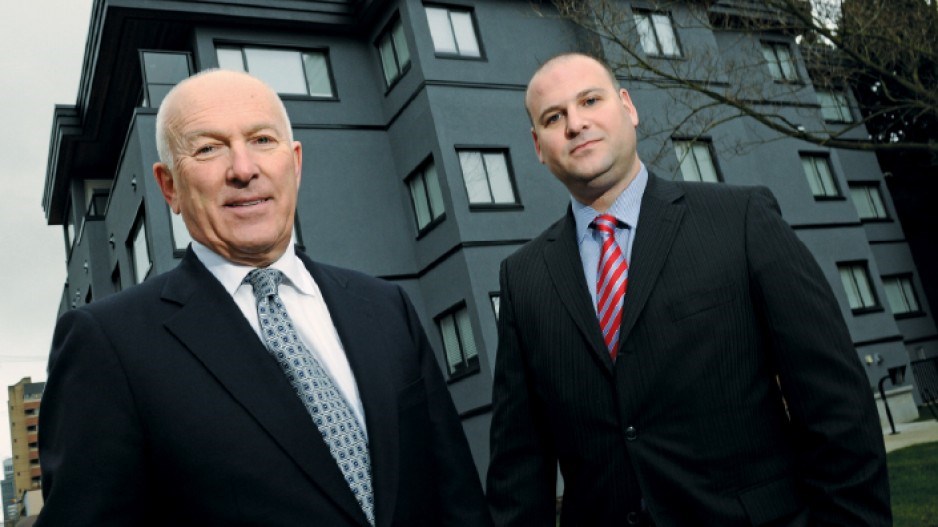Developers are pushing the City of Vancouver to help solve the city’s affordable housing crunch by ending what is effectively a ban on demolishing and rebuilding low-rise rental buildings in the West End.
“It’s a policy that is prejudicial. It’s heavy-handed. It’s punitive and it’s unfair,” said HQ Real Estate Services principal David Goodman, who along with son Mark Goodman also publishes the Goodman Report newsletter. “Many of these buildings are 60 years old and older. They need to be refreshed.”
In 1989, Vancouver city council implemented what it called a “temporary moratorium” on demolishing rental buildings in the West End. It changed the ban to a “rate of change” restriction in 2007 that allowed rental buildings to be torn down as long as they were rebuilt with the same number of units as they had before – a restriction that makes rebuilding a residential building uneconomical for developers.
The city also expanded the “rate of change” program to include similar regulations in other multi-family neighbourhoods, such as Kitsilano, South Granville, Kerrisdale and Marpole.
Staff told council in 2007 that the new regulations would stay in effect for two and a half years, Goodman said. Instead, six years later, they remain in effect – something that keeps property owners from both maximizing their property’s value and helping solve the city’s scarcity of affordable housing, he added.
But councillor Raymond Louie defended the city’s rate of change policy by pointing at the negative impact of higher density in multi-family neighbourhoods:
•shade and view blockages;
•a drain on city services such as sewer and water; and
•traffic havoc.
He then listed what he called the city’s successful efforts at generating rental housing:
•1,023 units built in projects under the now-defunct short-term incentives for rental (STIR) program as well as 544 rental units related to STIR that are working through the system;
•almost 200 units thus far under the city’s new Rental 100 program as well as enquiries related to building 1,072 units; and
•614 units under construction at the Aquilini Group’s rental-only project near Rogers’ Arena.
“We’ve got a number of programs in place and want to see what effect they will have.”
Louie added that he is open to reviewing the rate of change policy but “at this point, it’s not timely, given that we have other programs in place.”
Both Urban Development Institute Pacific Region CEO Anne McMullin and MacDonald Development Corp. principal Rob MacDonald believe the city is reluctant to allow higher density on sites where there are old walk-up buildings because displaced tenants might complain about the city’s complicity in having them kicked out of their homes.
But they said that concern can be mitigated if developers compensate tenants fairly.
“I’m for a program where if you wanted to demolish an existing building, existing residents would be compensated based on a fixed formula,” said MacDonald, who has bought and sold many West End buildings.
“The city could mandate that tenants get something simple like one or two months’ compensation for every year that they’ve lived in the building or a few thousand dollars for moving expenses.”
McMullin, whose organization speaks for the development community, said developers have not yet reached a consensus on what fair compensation for tenants should be. She said one idea is to allow tenants to return to a suite on the redeveloped site with the same rent as they had in the building that was torn down.
“There are a lot of ways to creatively come up with solutions to look after existing tenants.” •




